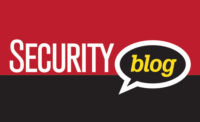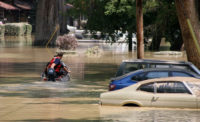How First Responders Can Take Advantage of Key Controls during Emergencies

It used to be that the word “lockdown” was only used in reference to an emergency protocol to restrict movement in a prison environment. Today, unfortunately the term is becoming more commonly used in many environments to describe measures taken under certain conditions of threat. Many buildings on the Washington Navy Yard were placed into lockdown when a gunman opened fire in a crowded cafeteria on the campus. Lockdowns, along with building evacuation and sheltering procedures, are an integral part of an emergency plan that can save lives.
These best practices are foundational mechanisms that enable effective, efficient and collaborative incident management by on-site personnel and first responders. Specialized technologies such as key control and management systems are an additional resource that can further facilitate incident management and help ensure the safety of the building’s occupants.
Planning and Prevention
Risk mitigation planning should always include strategies to help first responders as they arrive at the scene of an incident. Procedures such as vacating hallways, shelter-in-place and locking doors are particularly important, and a key-control system makes it easier for first responders to act in accordance with these procedures. In the case of a lockdown, a robust key control and management system can provide an additional layer of security and information for first responders. Locked doors can only be opened from the outside with a key that is stored in the key cabinet, and those keys can only be accessed by authorized individuals with a proper code, badge or biometric identification. Identification badges can be pre-configured and distributed to designated first responders and in the event of an incident, when they reach the scene they simply scan the badge into the system, and the critical emergency keys will be released. Key-control systems allow emergency personnel to quickly and easily have access to locked doors, closets and other spaces where individuals might be hiding from a gunman – or where a criminal may be hiding.
Key control takes on even more relevance in emergency planning and preparedness on school or business campuses. Since campuses often cover large geographic areas, individuals authorized to be on-site may change frequently. These locations can include hospitals, research facilities, dormitories and food service areas, among others. Without adequate measures in place for securely storing keys and accurately tracking their use, keys to sensitive areas, private offices and restricted sites can become misplaced, resulting in serious breaches of security and the possibility for valuable time lost when emergency situations arise. A key-control system maintains strict accountability for keys and limits both key duplication and distribution.
Actionable, Timely Information Elevates Response
Many campuses are never entirely closed, and people are coming and going all the time. Entrances to labs, IT departments and other restricted areas are usually controlled by physical keys or access control cards. In all, key control is a very strategic and integral element within a security platform and actionable, timely information is critical to its functioning.
When time is of the essence, the up-to-date and reliable information provided by a key-control system can be accessed quickly, allowing personnel to proceed with established procedures regarding secure areas or valuable assets. For example, if fleet vehicles must be moved out of an area because of potential flooding or fire, doing so quickly and efficiently can depend on how quickly each of the vehicle keys can be located. Immediate confirmation of where the keys are or identifying who has possession of them can make the difference in saving or losing assets.
System Features Enhance Efficiency
It’s also important to remember that in addition to traditional first responders such as fire, law enforcement and EMS (emergency medical services) personnel, there is a wider circle of personnel who may play an integral role in emergency situations. Key control systems that are strategically located, networked and easy to use and manage add to an individual’s ability to efficiently cope with an emergency.
Business, government and educational facilities, staff and first responders face a greater variety and intensity of personal threats than ever before. For these reasons, key control and management should be part of any campus emergency plan.
Looking for a reprint of this article?
From high-res PDFs to custom plaques, order your copy today!






